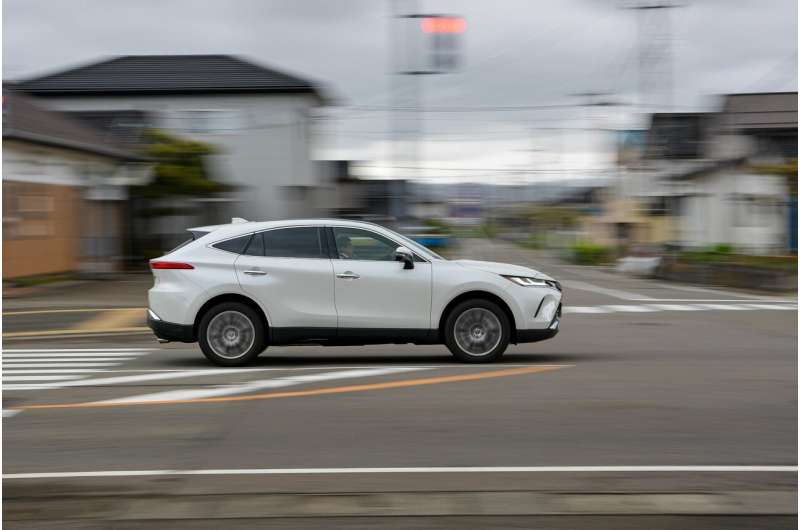
We're seeing more big cars on our roads, especially large wagon-style vehicles with a four- or all-wheel drive, known as sport utility vehicles or SUVs. For every passenger car sold in Australia, almost three SUVs are sold.
Vehicles such as pickup trucks, large utes, minivans and SUVs tend to offer more protection to their occupants than smaller cars. This is largely due to their larger mass and the way their structures are designed to absorb impact. For the drivers and passengers, this can mean a lower risk of injury in multi-vehicle collisions.
But those same attributes increase the risks to occupants of smaller vehicles, pedestrians and cyclists. The height of the large vehicle's front end can intrude into the passenger compartment of a smaller vehicle and its greater mass can lead to more forceful impacts.
The invincibility perception
Surveys show drivers believe larger vehicles are safer. This has a major influence on deciding which car to buy (among other factors such as prestige and off-road capabilities).
The perception of safety could potentially lower a driver's sense of risk aversion, leading to riskier driving behaviors, such as adopting less cautious hand positions on the steering wheel. SUV drivers more frequently drive with one hand (as opposed to a "10–2 o'clock" hand position), suggesting they feel safer than other car drivers.
Impact on collisions
A study from the Netherlands found a significant increase in fatality risk with heavier vehicles.
This has also been seen in the United States, where a study found a 500 kilogram increase in vehicle weight, which could mean the difference between an SUV and a sedan, correlated with a 70% higher fatality risk.
The 2003 bumper height-matching standard aimed to reduce the severity of crashes between SUVs/pickup trucks and cars. By aligning the bumper heights of these vehicles, their bumpers would engage properly during a collision, improving the crash force distribution and better protecting occupants.
But it has had mixed results. It modestly decreased death risks in side-collisions but was less effective in head-on crashes. This suggests further safety improvements are needed to address vehicle-to-vehicle collision impacts effectively.
The likelihood of SUVs causing fatalities to drivers in other cars reduced from being 132% more likely for a collision with an SUV in the early 90s, to 28% more likely by 2016. Likely reasons for the decrease include implementation of the bumper height-matching standard, as well as improvements in vehicle design: the implementation of crumple zones, better side-impact protection and advanced safety features such as electronic stability control.
However, we haven't seen similar improvements with pickup trucks, suggesting weight is a possible cause of the increased risk of fatalities.
This article is republished from The Conversation under a Creative Commons license. Read the original article.![]()
Citation: How vehicle size impacts others in a crash (2024, June 20) retrieved 20 June 2024 from https://techxplore.com/news/2024-06-vehicle-size-impacts.html
This document is subject to copyright. Apart from any fair dealing for the purpose of private study or research, no part may be reproduced without the written permission. The content is provided for information purposes only.
